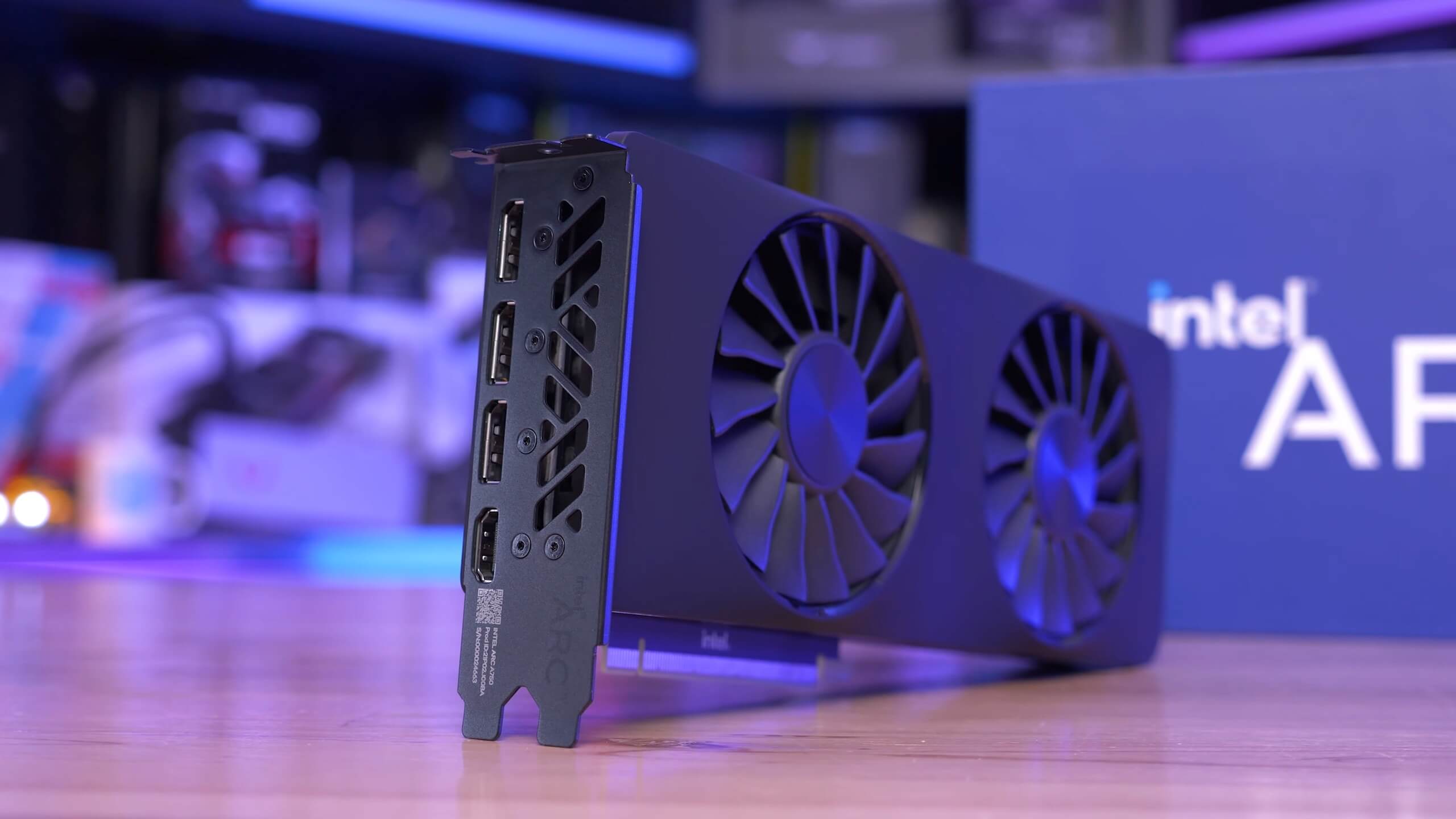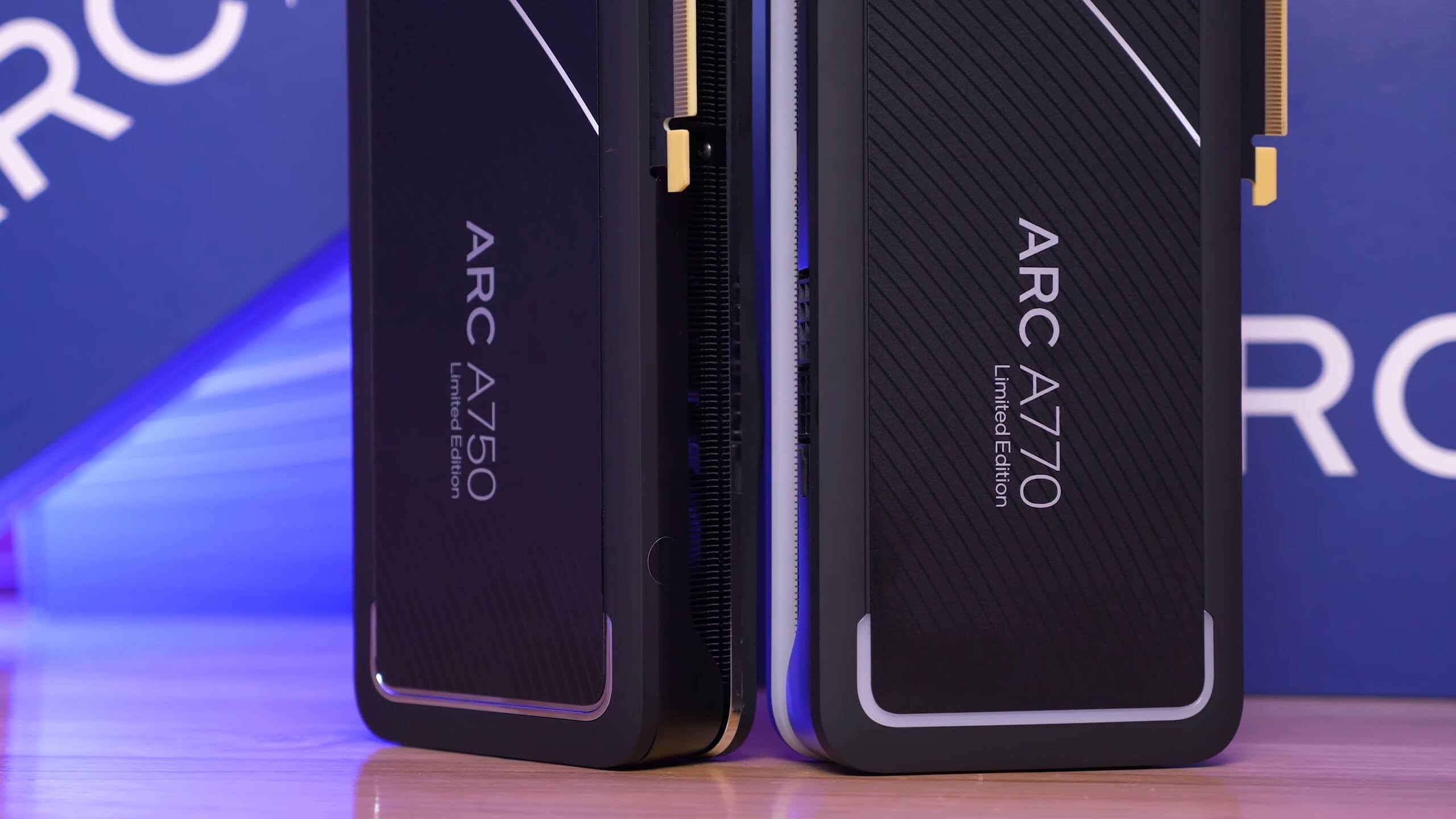Recap: Intel launched the Arc A750 and A770 in mid-October at $290 and $330 for the 8GB models and $350 for the 16GB Limited Edition A770. A few weeks ago it discounted the A750 by $30 even as it announced a driver overhaul that promised major performance improvements.
It's only been in the last few weeks that the Arc GPUs have become readily available across the pond as they are in the US. Even though their launch was meant to be global, the mid-rangers were more expensive and scarcer in Europe in their first few months on the market.
Eurogamer collated some price data on the A750 and A770 back in November. The sites that were selling the A750 for €350-380 then have now knocked it under €300. The A770 has similarly fallen from the mid- to low-€400s to the high-€300s where it's more reasonable.
For example, the German site Notebooks Billiger has written €70 off the A750 to bring it down to €280. PC21 is matching that price in France and has 1,233 in stock. Both LDLC and Cybertek, also French, have knocked €50 off their prices to bring the A750 down to €310.

In the UK, the A750 has been discounted by £70 at Ebuyer to bring the price down to £260. Ebuyer also discounted the A770 from £410 to £360. Overclockers UK lowered their A770 listing from £450 to match Ebuyer at £360 and even outdid them on the A750 at £250. According to Videocardz, that's the cheapest the GPU can be found for in the UK.
In its new price tier, the A750 significantly undercuts the one Nvidia GPU that it consistently outperforms: the RTX 3050. The 3050 continues to be inexplicably inflated over its year-old $250 MSRP. In the UK it costs about £300 and across the channel it generally goes for north of €300.
Even at its lowered price, the A770 continues to be a harder sell in the face of competition from the RTX 3060 / Ti and RX 6800 / XT. Intel has marketed the A750 much more heavily in the last few months and I'd wager that it's outselling the A770 at a rate of five to one or more.
Intel's Tom Petersen said to PC World last week that Intel was focusing on claiming market share and establishing its legitimacy as a GPU maker for now. It sounds like Intel wanted to wait until it had ironed out the bugs and readied some decent drivers before it tried its hand in Europe.
